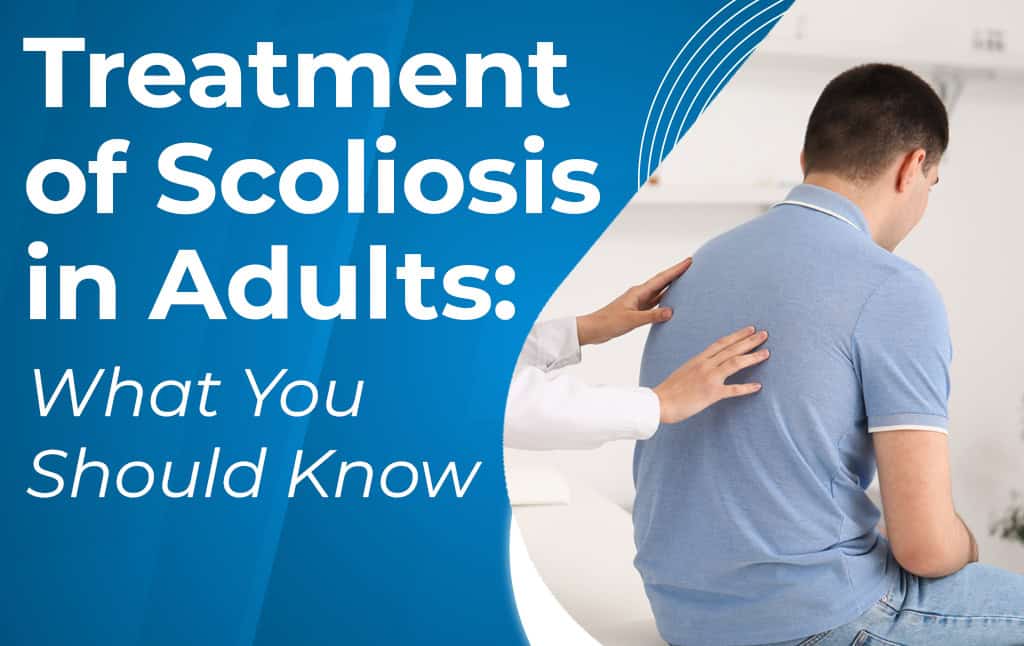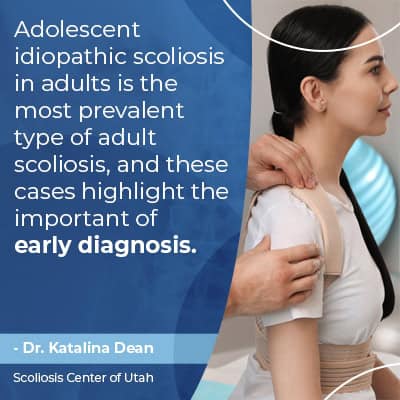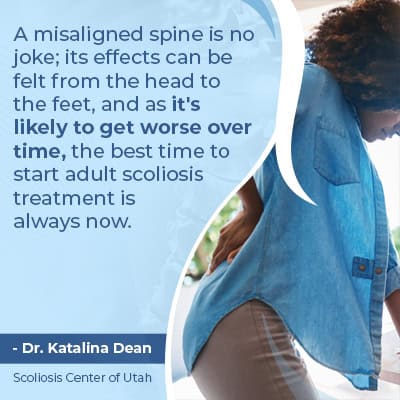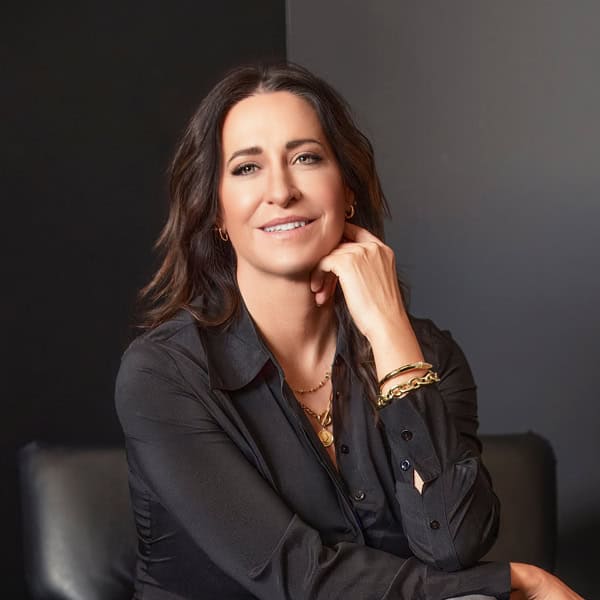Blogs
Treatment of Scoliosis in Adults: What You Should Know

Although scoliosis progression is triggered by growth, adults with scoliosis can still experience progression. Adult scoliosis differs from childhood scoliosis in a number of ways, including symptoms and treatment needs.
The goal of adult scoliosis treatment is to realign the spine for better balance and stability, address symptoms like pain, and improve quality of life.
What is Adult Scoliosis?
Scoliosis affects all ages from babies to the elderly, and adult scoliosis involves patients who have reached skeletal maturity.
Skeletal maturity is an important factor because once growth stops, symptoms can change, as can the condition’s progressive rate; although it’s growth that triggers progression, adult scoliosis can still progress, particularly once age-related spinal degeneration is occurring.
As scoliosis causes an unhealthy lateral spinal curve to develop that also rotates, the health of the spine, its surroundings, and the entire body can be affected in a number of ways.
Elderly scoliosis involves individuals 65+ years of age, and the weakening of spinal ligaments, soft tissue, osteoporosis, and bone spurs can play a role.
There are two main types of scoliosis diagnosed in adults, so let’s explore the differences between adolescent scoliosis in adults and degenerative de novo scoliosis.
Adolescent Scoliosis in Adults
 Adolescent idiopathic scoliosis in adults is the most prevalent type of adult scoliosis, and these cases highlight the importance of early detection.
Adolescent idiopathic scoliosis in adults is the most prevalent type of adult scoliosis, and these cases highlight the importance of early detection.
Idiopathic scoliosis has no known cause, and adolescent idiopathic scoliosis is the condition’s most-prevalent type overall, but what happens if it’s not diagnosed during adolescence?
Pre-existing adult scoliosis can be challenging to identify, but these cases are often extensions of adolescent scoliosis that weren’t diagnosed and treated during adolescence.
If a condition was diagnosed during adolescence, monitoring for progression is straightforward by comparing X-rays from adolescence to recent images taken of the adult’s spine.
A common scenario in these types of cases is conditions becoming noticeable once skeletal maturity is reached because this is when scoliosis becomes a compressive condition.
Childhood scoliosis isn’t commonly described as painful, but once conditions become compressive, they are vulnerable to back, muscle, and nerve pain.
Because adults with scoliosis are no longer growing, the progressive trigger of growth is no longer occurring, but conditions can still progress, albeit at a slower rate than most children experiencing growth spurts.
Degenerative scoliosis tends to be more severe due to spinal instability.
Degenerative De Novo Adult Scoliosis
Unlike idiopathic scoliosis in adults, degenerative de novo scoliosis develops in adulthood and is caused by natural age-related degenerative changes in the spine.
Degenerative scoliosis commonly affects middle-aged and older adults (45+), and it also more commonly affects females than males due to changes related to menopause (bone density and hormone changes).
Degenerative scoliosis is caused by degenerative changes within the spine, and these types of changes often start with the spinal discs that sit between adjacent vertebrae.
As degenerative instability is the cause, these cases can get worse as the spine becomes increasingly unstable and unbalanced, and as a result, degenerative scoliosis can be particularly painful, causing chronic lower back pain.
Degenerative scoliosis patients are also at a higher risk for injury through falls.
The degenerative process is gradual so conditions tend to get worse over time.
Treating Adult Scoliosis Without Surgery
Treating adult scoliosis without surgery involves a number of treatment modalities working together to improve the spine’s alignment, balance, and stability.
Pain management is a focus of treatment because as the main symptom of adult scoliosis, it can disrupt overall quality of life.
Here at the Scoliosis Center of Utah, the focus is on nonsurgical treatments for scoliosis of all types, and adult scoliosis can be managed through a combination of corrective bracing, targeted scoliosis-specific exercises, and a series of chiropractic techniques and manual adjustments.
So let’s break down each of these different facets of treatment and how they can work together to treat adult scoliosis.
Scoliosis Bracing for Adults
After a comprehensive assessment has determined the severity and symptoms a patient is experiencing, treatment plans are individualized.
Comprehensive assessment can involve a physical examination, digital postural analysis, and digital X-ray images.
Scoliosis bracing can help push the spine into a healthier alignment through 3-dimensional overcorrection.
The ScoliBrace® can support the spine, facilitate comfortable movement, and provide short-term pain relief, and when combined with the power of corrective mirror-image exercises and Chiropractic BioPhysics®, improvements can be made.
ScoliBalance Therapy
ScoliBalance® is the Center’s exercise-based portion of treatment and can help with slowing/stopping progression, improving the spine’s balance, stability, and flexibility.
The ScoliBalance® program can be modified to address the challenges of adult scoliosis treatment.
Scoliosis-specific exercises can also help improve the health of the spine’s surrounding muscles by addressing any related muscular imbalance and weakness for improved spinal support and stability.
Scoliosis-specific exercises can also help improve posture and body positioning so the spine is held in a healthy position.
This customized exercise program empowers patients as they are taught custom 3-dimensional corrective exercises that address their specific curvature type and postural issues: improving the spine’s alignment, heath, and function.
Many of the exercises taught can easily be performed from home to help patients sustain long-term corrective treatment results.
Chiropractic BioPhysics®
Chiropractic Biophysics® is the union of chiropractic and science: anatomy, geometry, biology, physics, and physiology.
A CBP practitioner is needed to ensure the appropriate exercises are being applied, and with only one percent of the world’s chiropractors holding a CBP certification, this is a significant benefit of becoming a patient of the Center.
The use of mirror-image exercises are key to helping patients achieve postural awareness, and when combined with manual adjustments and spinal remodeling, the result can be a spine that’s more flexible, aligned, balanced, and stabilized.
CBP offers patients a more natural and less-invasive treatment approach to realigning the spine and restoring the body’s and spine’s balance and stability.
 A misaligned spine is serious; its effects can be felt from the head to the feet, and as it’s likely to get worse over time, the best time to start adult scoliosis treatment is always now.
A misaligned spine is serious; its effects can be felt from the head to the feet, and as it’s likely to get worse over time, the best time to start adult scoliosis treatment is always now.
Surgical Treatment of Adult Scoliosis
The most common type of surgical treatment for addressing scoliosis is spinal fusion using metal rods and pedicle screws.
In cases that are particularly severe, atypical, or where non surgical treatment has been unsuccessful, surgical treatment remains an option.
What I want adult scoliosis patients to be aware of is that the longer treatment is delayed, the more conditions are likely to progress, making non surgical treatment options less effective.
Spinal fusion is invasive and risky, and the risks of surgical procedures increase with age, so what I advise my adult patients is that once scoliosis is diagnosed, act.
There is no harm in applying less invasive conservative treatment options in an attempt to avoid the necessity of a surgical recommendation.
A spine that’s corrected through non surgical treatment is one that will be stronger and more flexible.
Conclusion
Adult scoliosis should be taken seriously; while it can progress slowly over time, the effects become harder to improve and/or reverse, and the more severe adult scoliosis becomes, the less effective non surgical treatment options are.
A misaligned spine is associated with a number of issues: lower immunity, sexual issues, postural issues, digestive issues, lung and cardiac impairment, and more.
The benefit of a customized approach is that plans can be modified to account for the unique challenges associated with different age groups.
When the spine curves unnaturally, the body’s being exposed to a lot of uneven forces, and as those forces increase over time, so do their effects.
Older adults have a number of degenerative changes to deal with, and as the spinal cord and brain form the body’s central nervous system, an unhealthy spine can also disrupt the brain’s ability to clearly communicate with the rest of the body.
I can’t guarantee any patient results, but the sooner conservative treatment is started, the more likely it is to be successful; the more scoliosis progresses, the more complex it is to treat.
So if you, or someone in your life, is affected by adult scoliosis, don’t hesitate to reach out to the Center for guidance, support, and an innovative treatment approach.

Dr. Katalina Dean
Dr. Katalina Dean is the founder and clinical director of Scoliosis Center of Utah, in Midvale, UT. Her team specializes in posture correction, spinal rehabilitation, and non-invasive scoliosis care and bracing.
Call Today
Do You Qualify for Care?
Schedule an Appointment Below
